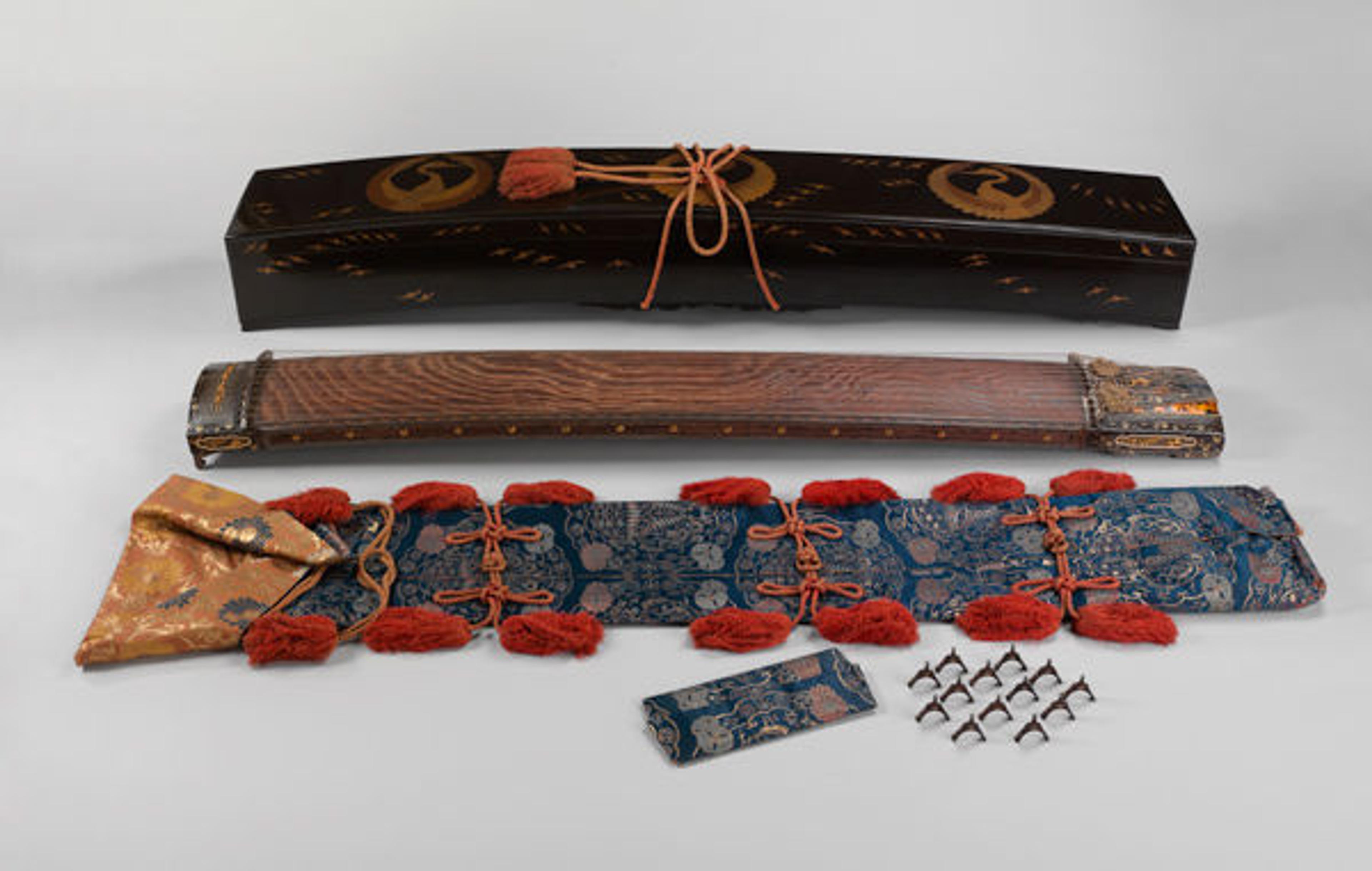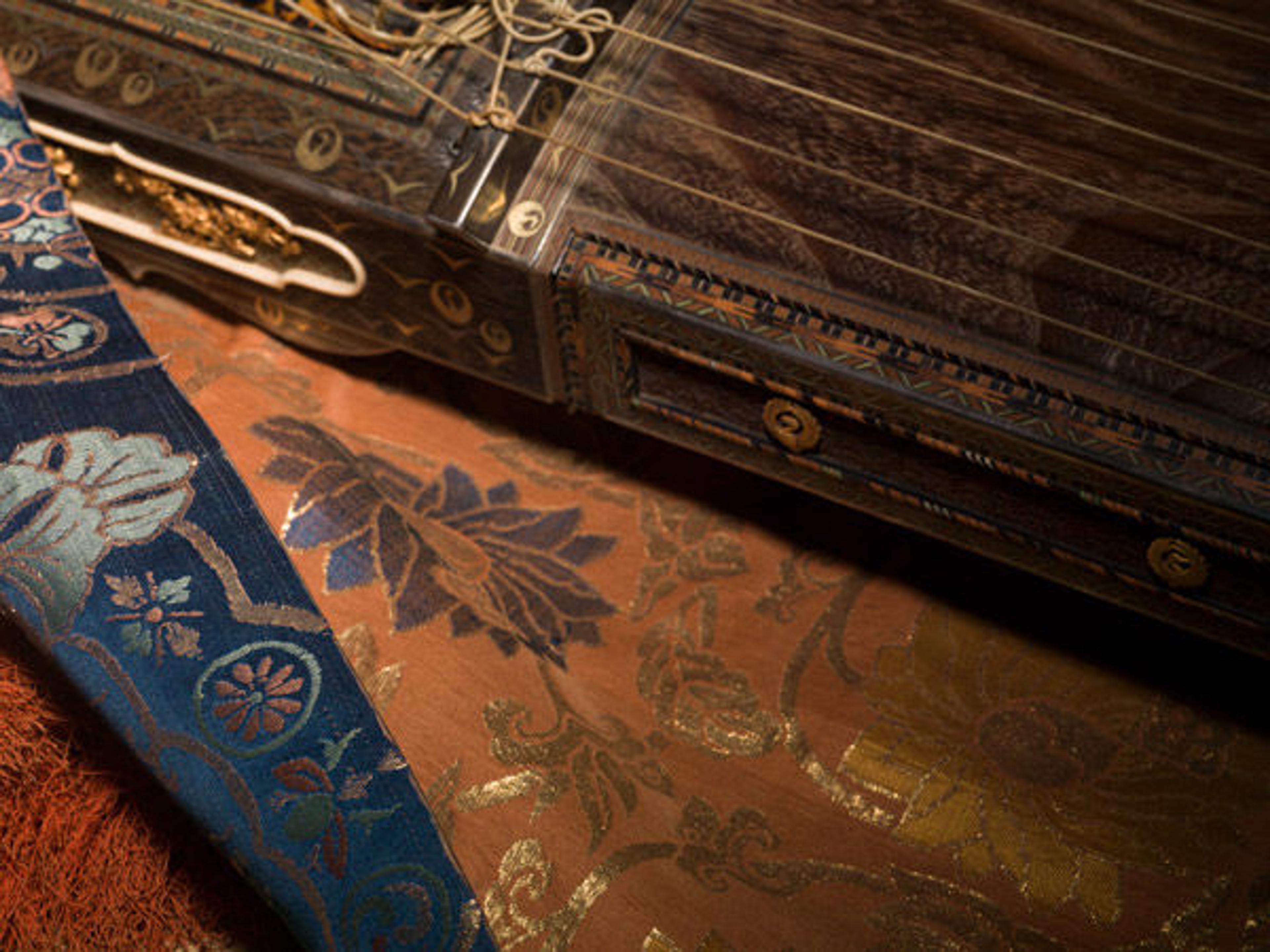On Acquiring a Rare Early Seventeenth-Century Koto

Koto, early 17th century. Japan. Metalwork by Goto Teijo, ninth-generation Gotō master, Japan (1603–1673); Workshop of Gotō Yūjō (Japanese, ca. 1440–1512, first-generation Gotō master). Various woods, ivory and tortoiseshell inlays, gold and silver inlays, metalwork. The Metropolitan Museum of Art, New York, Purchase, Amati Gifts, 2007 (2007.194a–f)
«One of the most exquisite acquisitions made by the Department of Musical Instruments in the last decade was a spectacular koto, or long zither, from early seventeenth-century Japan. In addition to the instrument itself are many components, including an early nineteenth-century lacquered storage box, an eighteenth- and nineteenth-century silk brocade wrapping, and thirteen silver-tipped and -lined bridges. Each component is expertly decorated, and the process of exhibiting and photographing the beauty of these pieces is complicated. A stop-action video taken after a 2013 photo session reveals the various elements involved in packing the koto for transportation.»
A video posted by MMA Photo Studio (@metphotostudio) on Mar 24, 2015 at 3:31am PDT
The possibility of acquiring this work in 2007 was an extraordinary opportunity, as the instrument is both an exquisite work of art and has an amazing provenance. However, even the most confident curator becomes anxious when their proposed acquisition comes under the intense scrutiny of a team of conservators. Specialists in wood, metal, paper, fabric, and lacquer work all contributed to the examination of this instrument and its component parts. I waited nervously as the conservators subjected each element to intense scrutiny. Finally, they enthusiastically rendered their opinions, and I learned that the woods used in the inlay were expensive imports from Indonesia, that the metal work on the instrument was by the famous Goto family of sword hilt makers, and although some components were made for the instrument later, they were all composed of the highest-quality materials—including the beautiful nineteenth-century fabric that wraps the koto when housed in its extraordinary lacquer case.

Detail view of 2007.194a–f. Photographed for 82nd & Fifth by Karin Willis © 2013 The Metropolitan Museum of Art
The circumstances of its conception are as extraordinary as the object itself. In 1600, during a series of battles that led to the unification of Japan, Tanabe Castle was under siege by fifteen thousand men. Holding the castle was Hosokawa Yūsai (1534–1610), military commander and sole keeper of the secret interpretive traditions of a tenth-century imperial anthology of Japanese poems (Kokin Wakashū). To save him, the emperor dispatched three poet-warriors, including Yūsai's son-in-law, Karasumaru Mitsuhiro (1579–1638). Yūsai's son, the daimyo Hosokawa Tadaoki (Sansai) (1563–1646), is said to have presented the instrument to Mitsuhiro in gratitude for the rescue. According to tradition, its completion took one thousand days.
Related Links
82nd & Fifth: "Gratitude"
View this instrument on One Met. Many Worlds.
Ken Moore
Ken Moore is a curator emeritus in the Department of Musical Instruments.